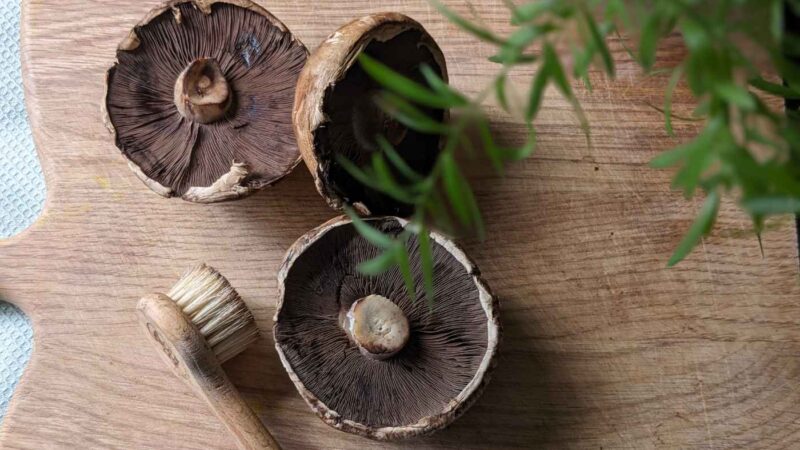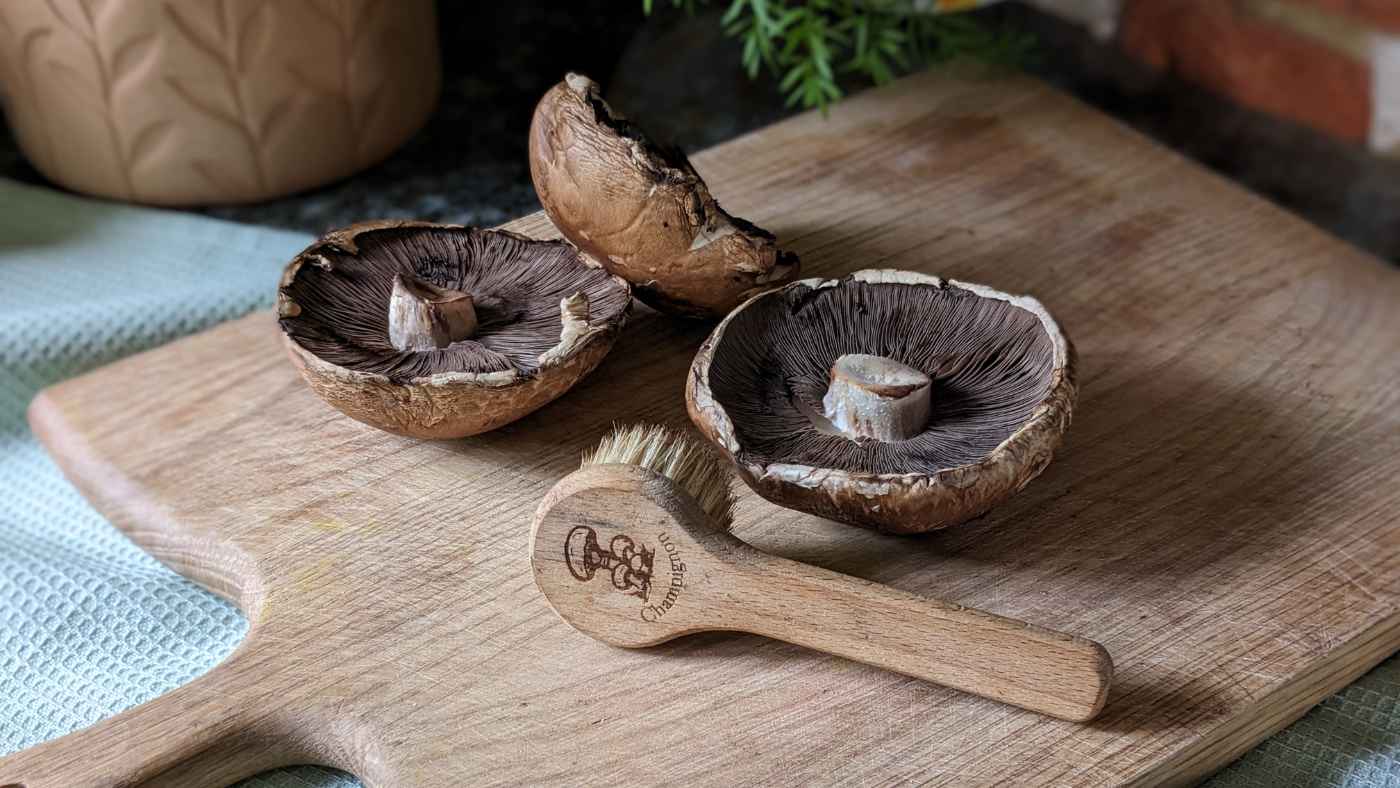Mushrooms are porous, just like sponges, so they will soak up moisture when you wash them in water. Useful if you are mopping up liquid from your kitchen worktop, but less than ideal when you are trying to cook delicious mushroom dishes.
When I worked in professional kitchens, washing mushrooms in water was pretty much a sackable offence. And for a very good reason. No one likes soggy rubbery mushrooms.
So, how should you clean mushrooms? Well, I’ll tell you now, it isn’t with water. Most mushrooms you buy in supermarkets aren’t even that dirty, because they are grown in controlled environments on logs or straw. Not in the dirt. So, a gentle wipe will do!
But there is an exception. If you have got your hands on some specialist wild foraged mushrooms, then you may find yourself battling with quite a lot of dirt and bugs.
Read on to discover my step-by-step guide on cleaning mushrooms, the proper way.
Quick links:
Required equipment
You don’t need any fancy equipment to clean mushrooms. In fact, it is highly likely that you probably have most of these tools in your kitchen already.
- A colander (optional)
- A sharp knife
- A mushroom brush or pastry brush (optional)
- Kitchen roll or a clean linen cloth

How to clean mushrooms
Now that you’ve got all of the correct equipment to hand, grab your shrooms ready for cleaning! No matter what mushroom you have (unless you have morels), be it chestnut, portobello, oyster, king oyster, maitake, enoki, or even lion’s mane mushrooms, you should follow these quick and easy steps.
Step 1: Shake off any excess dirt
Equipment: Colander
Have you got a particularly dirty batch of mushrooms? Well, grab your colander and decant your mushrooms into it. Gently shake the colander over your kitchen sink, allowing any excess dirt to shake off the shrooms in the process.
Step 2: Cut off large stems
Equipment: Sharp knife
The large stems of mushrooms are prone to harbouring dirt. Plus they aren’t great to cook with. So you can remove these from your mushrooms.
Not all mushrooms that you buy will have large stems still attached, like chestnut, portobello, or king oyster. But oyster, maitake, enoki, and lion’s mane mushrooms are often sold in a cluster with a large stem still attached.

Step 3: Brush the mushrooms
Equipment: Mushroom, pastry brush or dry kitchen towel
Gently brush off any dirt from the mushrooms. The easiest way to do this is with a brush, but you can also use a dry piece of kitchen towel or linen cloth. Make sure to pay attention to any creases or folds in the mushrooms which may be hiding dirt.
If your mushrooms aren’t visibly dirty then feel free to skip this step.

Step 3: Wipe the mushrooms clean
Equipment: Kitchen towel or clean linen towel
Get a piece of kitchen towel or a clean linen towel and dampen it with water. Make sure to squeeze out any excess water from the towel, you don’t want to let any moisture enter the mushrooms. Think of it like a wet wipe.
Use the dampened towel to gently wipe your mushrooms clean. Place the cleaned mushrooms on a dry towel until you are ready to use them.
Step 4: Cook or store your mushrooms
Now you are ready to prepare and cook your mushrooms. My favourite way to cook with mushrooms is to finely slice them and cook them on high heat with a small amount of oil. Make sure not to add too much moisture when cooking them as you will undo all of your good work above.
You can follow my Lion’s Mane recipe to cook a whole variety of different mushrooms.
If you aren’t ready to cook your mushrooms, then you should make sure they are completely dry and store them in the fridge inside a dark paper bag or a bowl covered in a clean linen towel. Avoid cling film, as this stops airflow and can spoil your mushrooms.
An exception to the rule
Whilst I am against cleaning mushrooms in water, there is an exception to this – some wild mushrooms.
Wild mushrooms are harvested from natural spaces, like forest floors and trees. This means they may be covered in dirt and lots of little bugs. Two culprits of this are morel and chanterelle mushrooms.
They are both very expensive mushrooms which can’t be cultivated in controlled environments. So, if you do get your hands on either of these mushrooms, then you will want to be extra careful when cleaning them.
Morel mushrooms should be rinsed in cold water, sliced in half lengthways and then soaked in salt water for about 5 minutes before draining and drying them on a clean linen towel.
Chanterelle mushrooms, if they are dirty, can be rinsed under cold water. If they are particularly dirty, then you may want to consider soaking them for a few minutes. Sometimes you get chanterelle mushrooms that are surprisingly clean, in which case, use the normal cleaning method provided above.






Leave a Reply